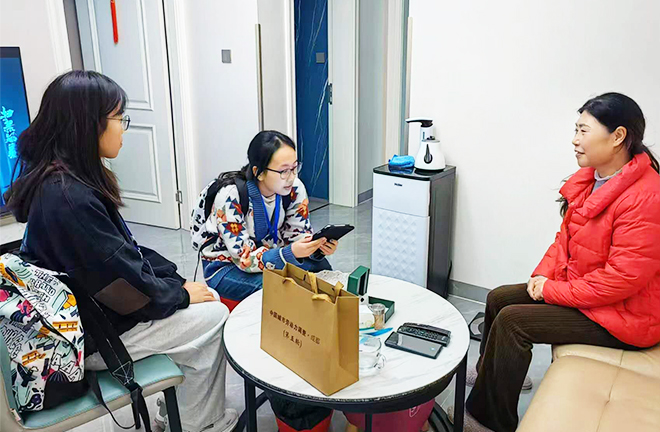Survey on urban labor informs China’s development

A scene of the 2025 follow-up survey Photo: PROVIDED TO CSST
The China Urban Labor Survey (CULS) is a major collective research project conducted by the Institute of Population and Labor Economics (IPLE) at the Chinese Academy of Social Sciences. The survey, carried out approximately every five years, observes labor market dynamics from the micro-level perspectives of individuals and households. To date, the CULS has been conducted in 2001, 2005, 2010, 2016, and 2023. In 2025, the research team has begun the first follow-up survey, revisiting respondents from the 2023 survey, with completion expected by year-end.
Du Yang, director of the IPLE, told CSST that the CULS has been a fundamental project of the institute for approximately 25 years. This year’s follow-up survey aims to capture changes in China’s urban labor market by tracking household- and individual-level data.
The development of China’s labor market has borne witness to the nation’s economic miracle. In just a few decades, the urban labor market evolved basically from scratch, progressing from spontaneous exploration to a structured system while withstanding challenges such as state-owned enterprise reforms, China’s accession to the WTO, the global financial crisis, and shifts in demographic and economic structures. As China’s economy has entered a new development stage, accompanied by structural changes, labor market dynamics also exhibit new characteristics.
Accordingly, each CULS survey highlights different themes and focal points. Qu Yue, head of the Department for Labor and Human Capital Research at the IPLE, explained that the development of China’s labor market generally followed a trajectory from “rigidification” around 2000 to “disorder” around 2005, “reorganization” around 2010, “gradual improvement” after 2015, and the current phase of “high-quality development.” Each survey aligned closely with the major issues of its time: the 2001 survey focused on state-owned enterprise reforms and the resultant layoffs; the 2005 survey addressed urban-rural labor market segmentation and migrant workers; the 2010 survey examined the impact of the global financial crisis on employment; the 2016 survey explored the impact of the technological revolution and evolving skill demands; and the 2023 survey centered on the impact of the COVID-19 epidemic and human capital accumulation.
The fifth round of the CULS in 2023 covered 381 neighborhood committees across eight Chinese cities: Shanghai, Chengdu, Guangzhou, Wuhan, Xi’an, Shenyang, Fuzhou, and Guiyang. In total, it collected 9,122 household and 26,145 individual questionnaires. Through decades of consistent effort, the CULS has provided essential data for academic research and public policy analysis concerning China’s urban labor market. It has also served as a key reference for comprehensively observing changes in the urban labor market since the beginning of the 21st century, identifying its distinctive features, and understanding China’s economic transition and global integration.
All previous CULS surveys have shared a focus on depicting household living conditions and family members’ roles in the labor market. The 2025 follow-up survey, themed “high-quality and full employment,” differs from the previous five rounds by placing greater emphasis on tracking changes in employment, income, consumption, social security, and satisfaction among households and individuals over recent years.
The Chinese economy is undergoing a period of rapid structural adjustment. These structural shifts not only reflect the general characteristics typical of middle-income countries advancing toward high-income status but also embody the distinct features of China’s economic development. As the country has entered a new development stage, the labor market’s dynamic changes have become increasingly prominent. Du Yang highlighted the “Lewis turning point” as the most significant expression of these structural changes. However, he noted that labor market shifts will not cease after this turning point, stressing that continual observation and analysis of labor market dynamics remain a vital task for Chinese labor economists. For this reason, the CULS holds both contemporary relevance and academic value.
Edited by CHEN MIRONG
